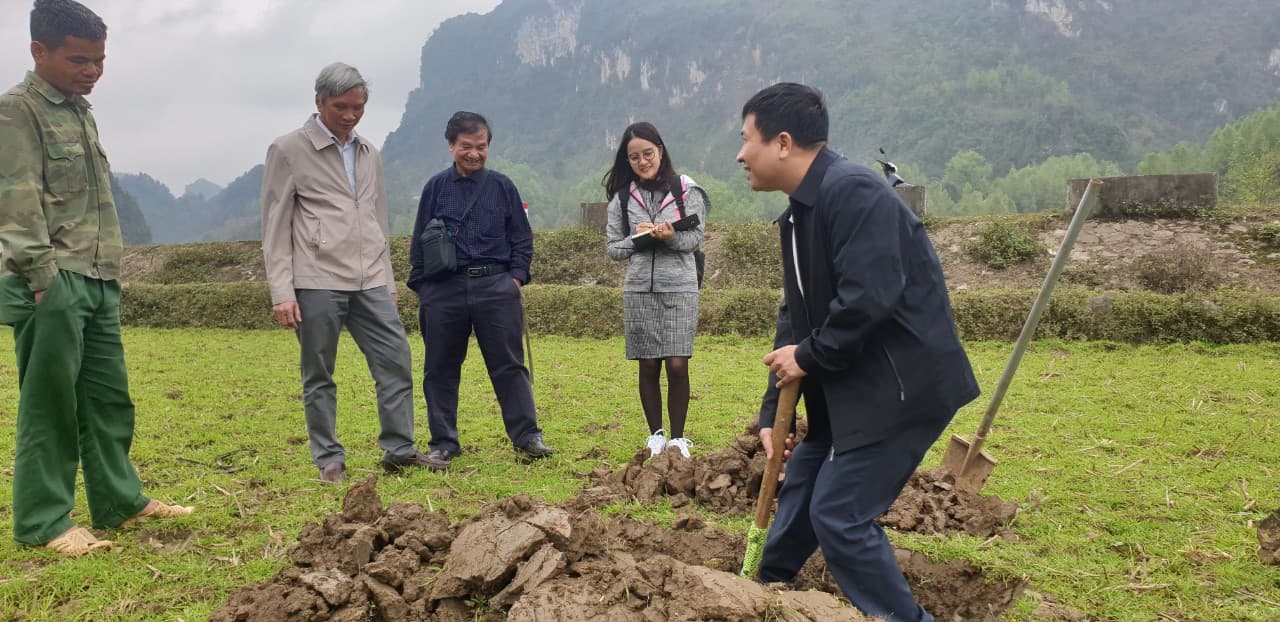Nguyễn Thị Linh Phương1, Vũ Ngọc Hùng1
[1] Phân Viện Quy hoạch và Thiết kế nông nghiệp miền Nam, email: huynhvuanh6061@gmail.com
TÓM TẮT
Nghiên cứu đặc điểm, đánh giá thích nghi đất đai và đề xuất hướng sử dụng hợp lý được thực hiện cho huyện Cần Giờ là cần thiết, làm cơ sở để cung cấp căn cứ khoa học cho việc phân bố đất đai vào các mục đích sử dụng khác nhau một cách hợp lý. Có 3 nhóm đất chính với 9 đơn vị bản đồ đất trên địa bàn huyện, gồm: Nhóm đất cát biển, có 02 đơn vị đất, diện tích 1.223,3ha (1,74% DTTN); Nhóm đất phèn, có 06 đơn vị đất, diện tích 48.253,3ha (68,50% DTTN); và Nhóm đất nhân tác, có 01 đơn vị đất, diện tích 884,8ha (1,26% DTTN). Kết quả đánh giá thực trạng sử dụng đất nông nghiệp huyện Cần Giờ và đánh giá thích nghi đất đai đã xác định được 13 hệ thống sử dụng đất nông nghiệp (LUS) của 7 loại hình sử dụng đất chính (LUT); lựa chọn ra 05 loại sử dụng đất có ý nghĩa về kinh tế, xã hội, môi trường để đánh giá thích nghi đất đai; xây dựng bản đồ đơn vị đất đai với 14 đơn vị đất đai được mô tả chi tiết về nhóm loại đất (d), thành phần cơ giới đất (c), mức độ gley (g), độ sâu xuất hiện tầng phèn hoạt động (j), tầng phèn tiềm tàng (p) và địa hình (h); xây dựng bản đồ thích nghi đất đai cho 05 loại sử dụng đất được lựa chọn. Đề xuất sử dụng đất nông nghiệp huyện Cần Giờ trên cơ sở đánh giá thích nghi đất đai có xem xét kịch bản biến đổi khí hậu xác định 5 vùng cho: Phát triển cây rau – màu (723ha, chiếm 1,03% DTTN); cây ăn quả (4.150ha, 5,89% DTTN); duy trì rừng phòng hộ (33.009ha, 46,86% DTTN); nuôi trồng thủy sản (5.824ha, 8,27% DTTN); và sản xuất muối (1.000ha, 1,42% DTTN).
Từ khóa: bản đồ đất, đánh giá đất đai, sử dụng đất.
SUMMARY
Soil properties of Can Gio district and proposals for rational ure
Nguyen Thi Linh Phuong1, Vu Ngoc Hung1
1 Sub-National Institute of Agricultural Planning and Projection
Soils’ research and land adaptation assessment to propose rational use for the district level now are needed, as a basis for providing a scientific basis for land distribution in reasonable way, to meet the needs of socio-economic development of the district in the present and the future. The results of land map editing correction have identified 3 main soil groups with 9 land mapping units, including: Sandy soil group, with 02 soil units, an area of 1,223.3ha (accounting for 1.74% total area); Acid sulfate soil group has 06 soil units, 48,253.3ha (68.50% total area); and Group of artificial soil, with 01 soil unit, with an area of 884.8ha (1.26% totalarea). The results of the assessment of the agricultural land use of Can Gio district and the land adaptability assessment have identified 13 agricultural land use systems (LUS) of 7 main land use types (LUTs); selecting 05 LUTs with economic, social, and environmental significance to include in land suitable assessment; development of land unit map with 14 land units, detailed description of soil type group (d), soil texture (c), gley (g), the depth presence of Jarosite layer (j), the depth presence of potential acid sulphate layer (p) and topography (h); development of land adaptive maps for 5 selected land use types. Proposals on using agricultural land in Can Gio district based on land adaptive assessment considering climate change scenario identifies 5 regions for: Development of vegetables – upland crop (723ha, 1.03% of total area); perennial fruit trees (4,150ha, 5.89% of total area); maintenance of protective forests (33,009ha, 46.86% of total area); aquaculture (5,824ha, 8.27% of total area); and salt production (1,000ha, 1.42% of total area).
Keywords: land map, land assessment, land use.
Người phản biện: PGS.TS. Vũ Năng Dũng
Email: vunangdung15@gmail.com
Ngày nhận bài: 25/8/2020
Ngày thông qua phản biện: 20/6/2021
Ngày duyệt đăng: 22/6/2021
 Tạp chí
Tạp chí



